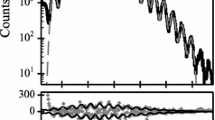Abstract
Detectors based on the superconducting-insulating-superconducting (SIS) junction long ago surpassed Schottky-diode semiconductor detectors as the most sensitive heterodyne mixers in the millimeter and submillimeter (far-infrared) wavelength range. Other novel superconducting device configurations have been applied as direct detectors. Though still in the early stages of development, and yet to find widespread application, they have demonstrated advantages over traditional semiconductor detectors in specialized situations. Exciting progress has been made in recent years in developing the superconducting tunnel junctions (STJ) as a photon detector for optical and near-optical wavelengths, where silicon CCD's are currently dominant. I examine some of the areas in which the properties of STJ detectors may best match the instrument capabilities that astronomical observations require, and discuss the implications of the intrinsic spectral resolution of the STJ. This capability will enable a significant increase in observing efficiency, once the technology matures, that should justify increased complexity of cryogenic systems, particularly for instruments to be used on the next generation of large ground-based telescopes.
Similar content being viewed by others
REFERENCES
Bloemhof, E. E., Int. J. IR and Millimeter Waves, vol. 18, p. 2177, 1997.
Phillips, T. G., and Woody, D. P., Ann. Rev. Astron. Astrophys., vol. 20, p. 285, 1982.
Sherman, N. K., Phys. Rev. Lett., vol. 8, p. 438, 1962.
Wood, G. H., and White, B. L., Appl. Phys. Lett., vol. 15, p. 237, 1969.
Cabrera, B., Clarke, R. M., Colling, P., Miller, A. J., Nam, S., and Romani, R. W., Appl. Phys. Lett., vol. 73, p. 735, 1998.
Tinkham, M., Introduction to Superconductivity, (McGraw-Hill: New York), 1975.
Peacock, T., Verhoeve, P., Rando, N., Perryman, M. A. C., Taylor, B. G., and Jakobsen, P., Astron. Astrophys. Suppl. Ser., vol. 123, p. 581, 1997.
Peacock, T., Verhoeve, P., Rando, N., Erd, C., Bavdaz, M., Taylor, B. G., and Perez, D., Astron. Astrophys. Suppl. Ser., vol. 127, p. 497, 1998.
Epps, H. W., and Miller, J. M., Proc. Soc. Photo-Opt. Inst. Eng., vol. 3355, p. 48, 1998.
Author information
Authors and Affiliations
Rights and permissions
About this article
Cite this article
Bloemhof, E.E. The Application of Superconducting Tunnel Junction Detectors to Astronomy. International Journal of Infrared and Millimeter Waves 20, 2003–2010 (1999). https://doi.org/10.1023/A:1022626517231
Issue Date:
DOI: https://doi.org/10.1023/A:1022626517231




